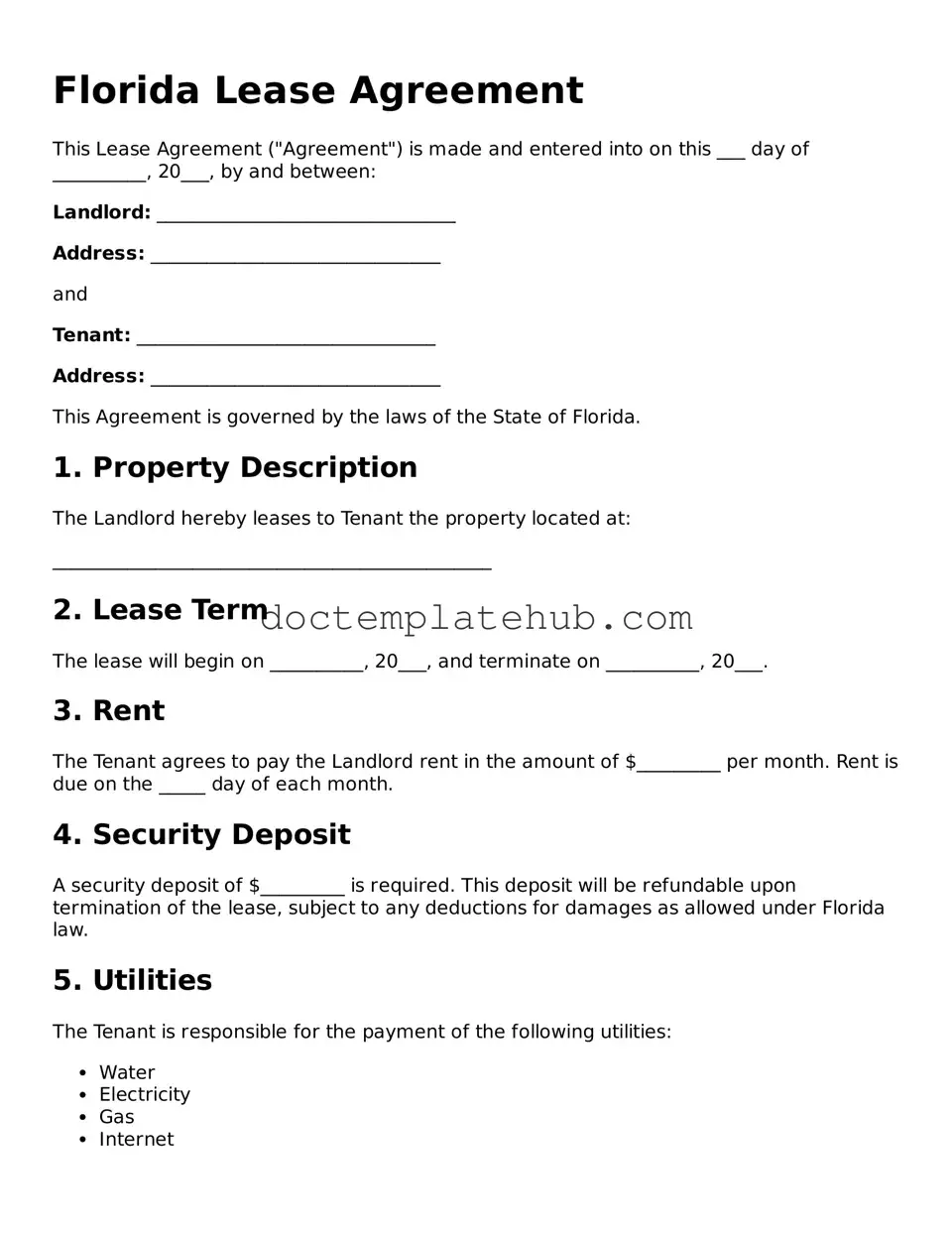What is a Florida Lease Agreement?
A Florida Lease Agreement is a legal document that outlines the terms and conditions between a landlord and a tenant for renting a residential property in Florida. This agreement specifies details such as the rental amount, duration of the lease, security deposit, and responsibilities of both parties.
What should be included in a Florida Lease Agreement?
Essential elements of a Florida Lease Agreement include the names of the landlord and tenant, the property address, lease duration, rent amount, payment methods, security deposit details, maintenance responsibilities, and rules regarding pets or guests. It’s important that both parties understand and agree to these terms before signing.
How long is a typical lease agreement in Florida?
Lease agreements in Florida can vary in length. Common terms are 6 months, 12 months, or even longer. Some landlords may offer month-to-month leases. The duration should be clearly stated in the agreement, as it determines how long the tenant has the right to occupy the property.
Can a lease agreement be terminated early in Florida?
Yes, a lease agreement can be terminated early, but it usually requires mutual consent from both the landlord and tenant. If one party wishes to break the lease, they may need to provide a written notice and possibly pay a penalty, depending on the terms outlined in the lease. Always refer to the lease for specific conditions regarding early termination.
What happens if a tenant does not pay rent?
If a tenant fails to pay rent, the landlord has the right to issue a notice to the tenant. In Florida, this notice typically gives the tenant a certain number of days to pay the overdue rent or face eviction proceedings. It’s crucial for tenants to communicate with their landlord if they are having trouble making payments.
Are verbal lease agreements valid in Florida?
While verbal lease agreements can be legally binding in Florida, they are not recommended. Written agreements provide clear documentation of the terms, which can help prevent misunderstandings or disputes. A written lease is always the best practice for both landlords and tenants.
